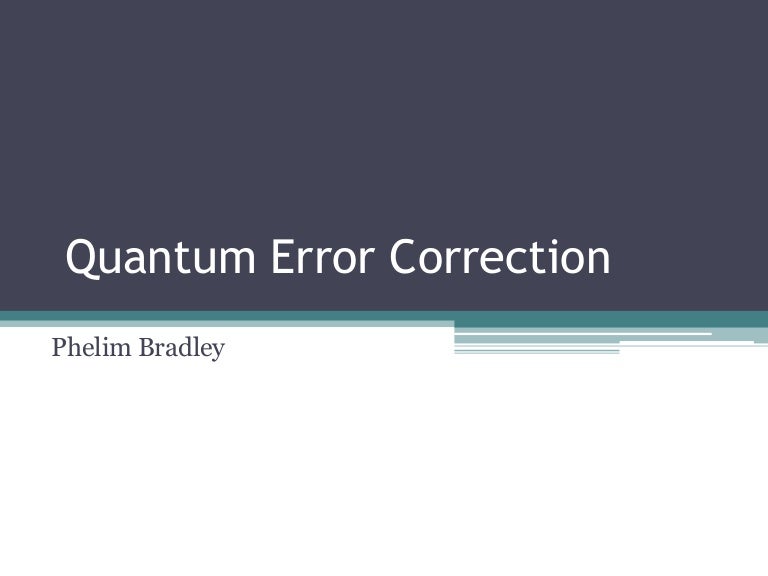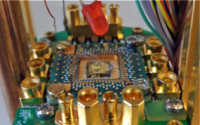
Quantum error correction course u of a code#
They conjectured in the Journal of High Energy Physics that space-time itself is a code - in anti-de Sitter (AdS) universes, at least. Ahmed Almheiri, Xi Dong and Daniel Harlow did calculations suggesting that this holographic “emergence” of space-time works just like a quantum error-correcting code. The bendy fabric of space-time in the interior of the universe is a projection that emerges from entangled quantum particles living on its outer boundary. They were working in physicists’ theoretical playground of choice: a toy universe called “anti-de Sitter space” that works like a hologram. That year - 2014 - three young quantum gravity researchers came to an astonishing realization. (A ball tossed into the air travels along a straight line through space-time, which itself bends back toward Earth.) But powerful as Einstein’s theory is, physicists believe gravity must have a deeper, quantum origin from which the semblance of a space-time fabric somehow emerges. In Albert Einstein’s general theory of relativity, gravity is defined as the fabric of space and time - or “space-time” - bending around massive objects. The effort to design better codes is “one of the major thrusts of the field,” Aaronson said, along with improving the hardware.īut in the dogged pursuit of these codes over the past quarter-century, a funny thing happened in 2014, when physicists found evidence of a deep connection between quantum error correction and the nature of space, time and gravity. Far more efficient quantum error-correcting codes are needed to cope with the daunting error rates of real qubits.

Now, even as small quantum computers are materializing in labs around the world, useful ones that will outclass ordinary computers remain years or decades away. “This was the central discovery in the ’90s that convinced people that scalable quantum computing should be possible at all,” said Scott Aaronson, a leading quantum computer scientist at the University of Texas - “that it is merely a staggering problem of engineering.” The computer scientists Dorit Aharonov and Michael Ben-Or (and other researchers working independently) proved a year later that these codes could theoretically push error rates close to zero. In 1995, Shor followed his factoring algorithm with another stunner: proof that “quantum error-correcting codes” exist. What’s more, these schemes must detect and correct errors without directly measuring the qubits, since measurements collapse qubits’ coexisting possibilities into definite realities: plain old 0s or 1s that can’t sustain quantum computations. For quantum computers to work, scientists must find schemes for protecting information even when individual qubits get corrupted. The feeblest magnetic field or stray microwave pulse causes them to undergo “bit-flips” that switch their chances of being |0 ⟩ and |1⟩ relative to the other qubits, or “phase-flips” that invert the mathematical relationship between their two states. Sustaining and manipulating this exponentially growing number of simultaneous possibilities are what makes quantum computers so theoretically powerful.īut qubits are maddeningly error-prone. The contingent possibilities proliferate as the qubits become more and more “entangled” with each operation. When qubits interact, their possible states become interdependent, each one’s chances of |0⟩ and |1⟩ hinging on those of the other.


Unlike binary bits of information in ordinary computers, “qubits” consist of quantum particles that have some probability of being in each of two states, designated |0⟩ and |1⟩, at the same time. But a fundamental problem stood in the way of actually building quantum computers: the innate frailty of their physical components. In 1994, a mathematician at AT&T Research named Peter Shor brought instant fame to “quantum computers” when he discovered that these hypothetical devices could quickly factor large numbers - and thus break much of modern cryptography.


 0 kommentar(er)
0 kommentar(er)
